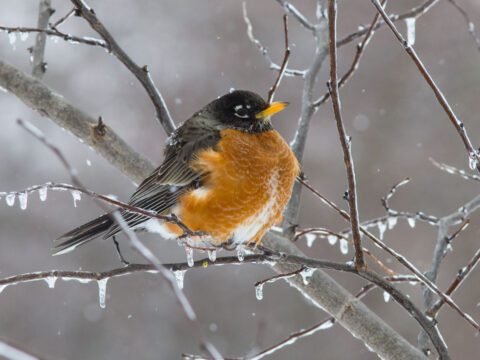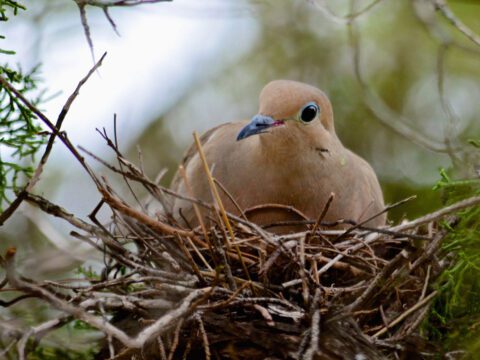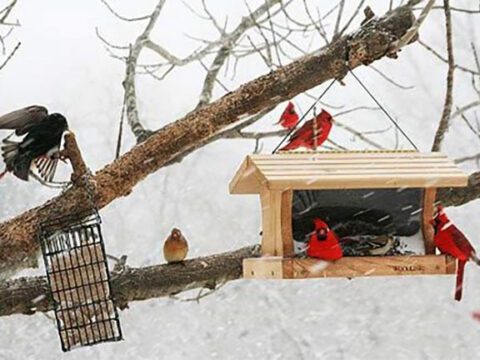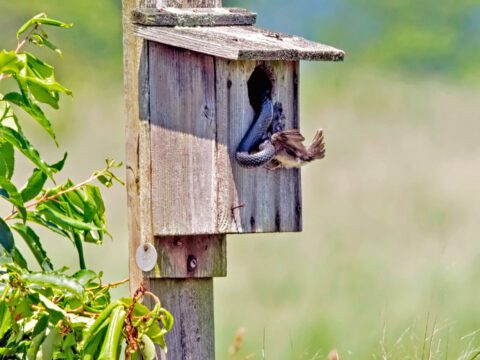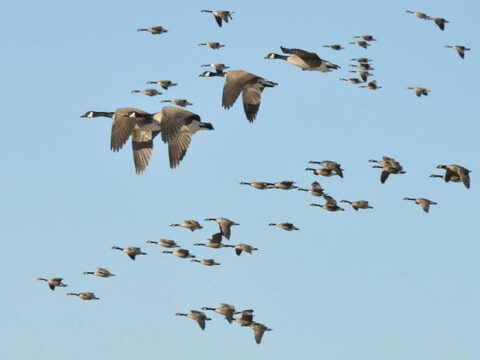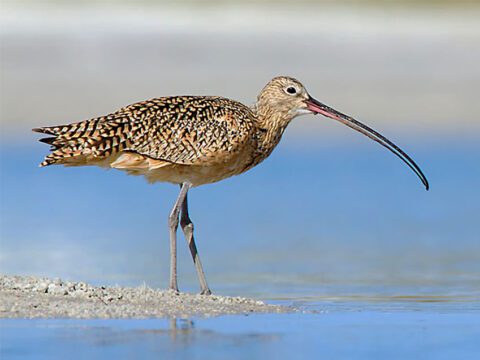Wastelands Worth Protecting: The Relative Value of Logging in Borneo
By David S. Wilcove
January 15, 2011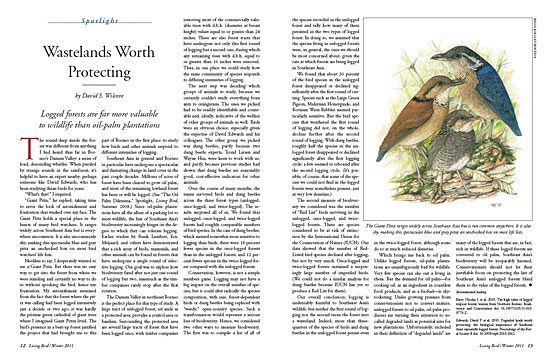
The sound deep inside the forest was different from anything I had heard thus far in Borneo’s Danum Valley: a series of loud, descending whistles. When puzzled by strange sounds in the rainforest, it’s helpful to have an expert nearby, perhaps someone like David Edwards, who has been studying Asian birds for years.
“What’s that?” I inquired.
“Giant Pitta,” he replied, taking time to savor the look of astonishment and frustration that washed over my face. The Giant Pitta holds a special place in the hearts of many bird watchers. It ranges widely across Southeast Asia but is everywhere uncommon. It is also uncommonly shy, making this spectacular blue and gray pitta an unchecked box on most bird watchers’ life lists.
Needless to say, I desperately wanted to see a Giant Pitta. But there was no easy way to get into the forest from where we were standing and certainly no way to do so without spooking the bird, hence my frustration. My astonishment stemmed from the fact that the forest where the pitta was calling had been logged intensively just a decade or two ago; it was hardly the pristine green cathedral of giant trees where I imagined Giant Pittas lived. The bird’s presence in a beat-up forest justified the project that had brought me to this part of Borneo in the first place: to study how birds and other animals respond to different intensities of logging.
Southeast Asia in general and Borneo in particular have undergone a spectacular and dismaying change in land cover in the past couple decades. Millions of acres of forest have been cleared to grow oil palm, and most of the remaining lowland forest has been or will be logged. (See “Palm Oil, Or The Conservation Dilemma Of The Potato Chip,” Spotlight, Living Bird, Summer 2008.) Since oil-palm plantations have all the allure of a parking lot to most wildlife, the fate of Southeast Asia’s biodiversity increasingly hinges on the degree to which they can tolerate logging. Earlier studies by Frank Lambert, Eric Meijaard, and others have demonstrated that a rich array of birds, mammals, and other animals can be found in forests that have undergone a single round of selective logging. Our goal was to explore how biodiversity fared after not just one round of logging but two, inasmuch as the timber companies rarely stop after the first rotation.
The Danum Valley in northeast Borneo is the perfect place for this type of study. A large tract of unlogged forest, set aside as a protected area, provides a control area or baseline. Surrounding the protected area are several large tracts of forest that have been logged once, with timber companies removing most of the commercially valuable trees with d.b.h. (diameter at breast height) values equal to or greater than 24 inches. There are also forest tracts that have undergone not only this first round of logging but a second one, during which any remaining trees with d.b.h. equal to or greater than 16 inches were removed. Thus, in one place we could study how the same community of species responds to differing intensities of logging.
The next step was deciding which groups of animals to study, because we certainly couldn’t study everything from ants to orangutans. The ones we picked had to be readily identifiable and countable and, ideally, indicative of the welfare of other groups of animals as well. Birds were an obvious choice, especially given the expertise of David Edwards and his colleagues. The other group we picked was dung beetles, partly because two dung beetle experts, Trond Larsen and Wayne Hsu, were keen to work with us, and partly because previous studies had shown that dung beetles are reasonably good, cost-effective indicators for other animals.
Over the course of many months, the teams surveyed birds and dung beetles across the three forest types (unlogged, once-logged, and twice-logged). The results surprised all of us. We found that unlogged, once-logged, and twice-logged forests had roughly comparable numbers of bird species. In the case of dung beetles, which seemed somewhat more sensitive to logging than birds, there were 18 percent fewer species in the once-logged forests than in the unlogged forests, and 12 percent fewer species in the twice-logged forest compared with the unlogged forests.
Conservation, however, is not a simple numbers game. Logging may not have a big impact on the overall number of species, but it could alter radically the species composition, with rare, forest-dependent birds or dung beetles being replaced with “weedy,” open-country species. Such a transformation would represent a serious loss of biodiversity. Hence, we considered two other ways to measure biodiversity. The first was to compile a list of all of the species recorded in the unlogged forest and tally how many of them persisted in the two types of logged forest. In doing so, we assumed that the species living in unlogged forests were, in general, the ones we should be most concerned about, given the rate at which forests are being logged in Southeast Asia.
We found that about 30 percent of the bird species in the unlogged forest disappeared or declined significantly after the first round of cutting. Species such as the Large Green Pigeon, Malaysian Honeyguide, and Bornean Wren-Babbler seemed particularly sensitive. But the bird species that weathered the first round of logging did not, on the whole, decline further after the second round of logging. With dung beetles, roughly half the species in the unlogged forest disappeared or declined significantly after the first logging cycle; a few seemed to rebound after the second logging cycle. (It’s possible, of course, that some of the species we could not find in the logged forests were nonetheless present, just at very low densities.)
The second measure of biodiversity we considered was the number of “Red List” birds surviving in the unlogged, once-logged, and twice-logged forests. These are species considered to be at risk of extinction by the International Union for the Conservation of Nature (IUCN). Our data showed that the number of Red-Listed bird species declined after logging, but not by very much. Once-logged and twice-logged forests sustained a surprisingly large number of imperiled birds. (We could not do a similar analysis for dung beetles because IUCN has yet to produce a Red List for them).
Our overall conclusion: logging is undeniably harmful to Southeast Asia’s wildlife, but neither the first round of logging nor the second turns the forest into a wasteland. Indeed, more than three-quarters of the species of birds and dung beetles in the unlogged forest persist even in the twice-logged forest, although some do so at much reduced densities.
Which brings me back to oil palm. Unlike logged forests, oil-palm plantations are unambiguously bad for wildlife. Very few species can eke out a living in them. But the demand for oil palm—for cooking oil, as an ingredient in countless food products, and as a biofuel—is skyrocketing. Under growing pressure from conservationists not to convert mature, unlogged forests to oil palm, oil-palm producers are turning their attention to so-called degraded lands as potential sites for new plantations. Unfortunately, included in their definition of “degraded lands” are many of the logged forests that are, in fact, rich in wildlife. If these logged forests are converted to oil palm, Southeast Asia’s biodiversity will be irreparably harmed. Conservationists should not let their justifiable focus on protecting the last of Southeast Asia’s unlogged forests blind them to the value of the logged forests.

All About Birds
is a free resource
Available for everyone,
funded by donors like you
American Kestrel by Blair Dudeck / Macaulay Library




